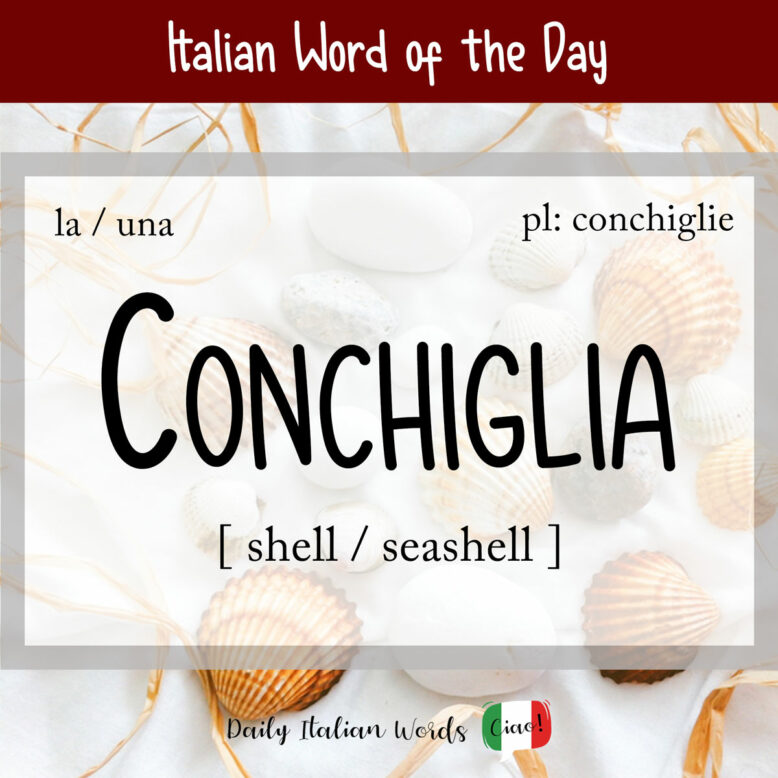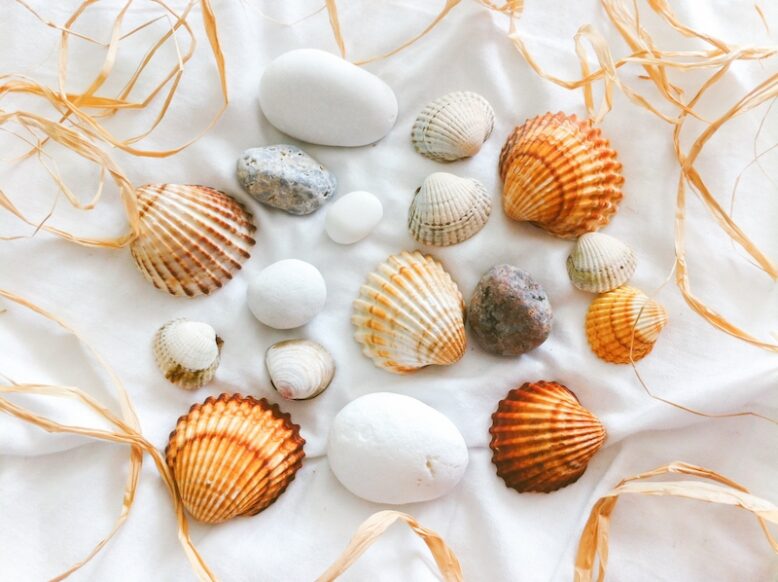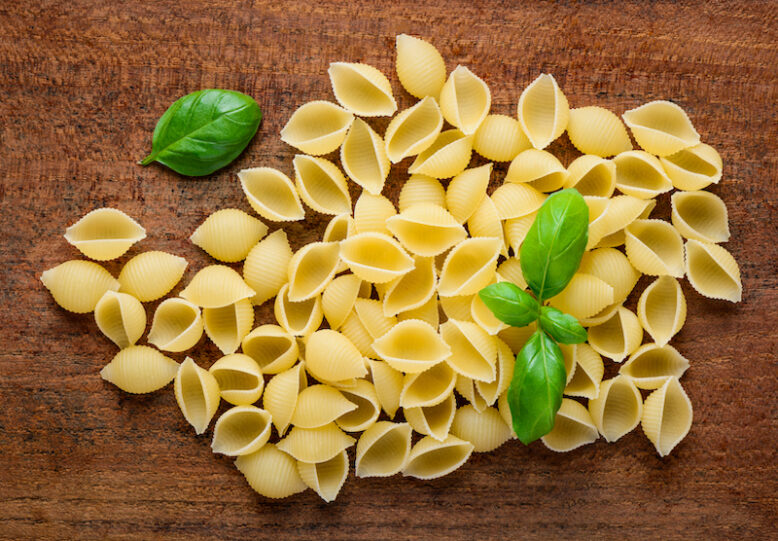The word for a shell, or seashell, in Italian is just as beautiful as the object itself: conchiglia. It can be traced back to the Latin conchylium which in turn comes from the Greek konkhýlion, a derivative of kónkhē meaning “concavity”. So if you ever have trouble recalling this word, just remember that shells are “concave”!

Conchiglia is a feminine noun, so it takes the following definite and indefinite articles:
- la conchiglia = the shell
- le conchiglie = the shells
- una conchiglia = a shell
- (delle) conchiglie = (some) shells
Ho trovato una bellissima conchiglia sulla spiaggia.
I found a beautiful shell on the beach.

Conchiglia is also the name given to various decorative and non-decorative objects whose shape is reminiscent of a shell. These include:
- punto a conchiglia = shell-stitch (crochet)
- conchiglia protettiva = protective cup for groin (used in sports)
- conchiglia = conch (the roof of a semicircular apse)
In its plural form conchiglie, it refers to a kind of shell-shaped pasta used in soups and other dishes.

To say that something is shaped like a shell, you can use the phrase a (forma di) conchiglia.
Il nostro portachiavi è a forma di conchiglia.
Our keychain is shaped like a shell.
Note that you cannot use the word conchiglia to refer to shells that don’t belong to living things, such as the shell of an egg or nut. In this case, you need to use the word guscio instead.
Heather Broster is a graduate with honours in linguistics from the University of Western Ontario. She is an aspiring polyglot, proficient in English and Italian, as well as Japanese, Welsh, and French to varying degrees of fluency. Originally from Toronto, Heather has resided in various countries, notably Italy for a period of six years. Her primary focus lies in the fields of language acquisition, education, and bilingual instruction.


